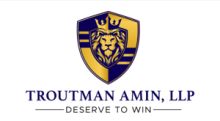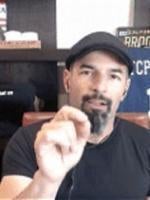The line between a solicitation and an informational message is often shifting.
At one extreme are a handful of decisions suggesting most any communication from a for-profit business will constitute a solicitation since every act of such a business is designed to make profit somehow. But most courts take a more thoughtful approach to the CFR requirements, which look at whether a message actually offers a good or service for purchase or rent.
Still the line here is difficult to find at times, so the decision in Hulce v. Zipongo, 2024 WL 1251108 (E.D. Wisc. March 18, 2024) offers a little much-needed clarity.
In Hulce the Defendant was sued for making calls advising of free services available to the consumer offered by Defendant but paid for by a third party insurer.
The Defendant argued the calls were not solicitations since the services were free to the Plaintiff. But Plaintiff argued the calls encouraged the “purchase” of a good or service–and the fact that the services were being paid for by a third party did not change the result.
Pretty interesting.
The Court looked at the issue and sided with the defense:
Although the purpose of the communications was to encourage plaintiff to utilize Foodsmart’s services, it does not follow that their purpose was to encourage him to purchase Foodsmart’s services. Indeed, plaintiff concedes that the purpose of the calls was not to encourage him to purchase Foodsmart’s services, since the services were available to him for free. 1 Instead, he contends that, had he agreed to sign up for Foodsmart’s services, CCHP would have purchased those services on his behalf by paying the various types of compensation available under its contract with Foodsmart. (Br. in Opp. at 1, 13.) Plaintiff argues that, because the definition of “telephone solicitations” does not specify who must make the purchase, the communications to him qualify as such solicitations even though he was not encouraged to purchase anything. However, while it is true that the statute does not specifically state that the purpose of the communication must be to encourage the recipient to make a purchase, the statute still requires the communication’s purpose to be to encourage someone to make a purchase.
That is so because the ordinary understanding of the phrase “encouraging the purchase” implies that some subject is being encouraged to make a purchase. *4 In the present case, the evidence establishes that the purpose of the communications was not to encourage anyone to purchase Foodsmart’s services. Although plaintiff was encouraged to utilize Foodsmart’s services, he was not encouraged to purchase them because, to utilize them, he did not need to pay money or its equivalent. The only other potential purchaser was CCHP. While CCHP’s paying Foodsmart to provide services to its members might reasonably be characterized as a “purchase” of those services on behalf of its members, the purpose of the communications could not have been to encourage CCHP to make that purchase. At the time of the communications, CCHP had already agreed to pay Foodsmart for any services provided to its members, so CCHP needed no further encouragement to do so. Moreover, the communications were not targeted at CCHP in any way. The calls did not, for example, ask plaintiff to encourage CCHP to add Foodsmart’s services to his health plan. Thus, the communications did not encourage anyone to make a purchase.
Not bad right?
Since the insurance company was paying for the Defendant’s services regardless there was no effort to have Defendant or the insurer purchase anything new here– just to have Defendant use what was already paid for.
The Court also rejected the argument that because the insurer might be purchasing services on an incremental basis the calls did encourage purchase:
Plaintiff contends that, because he was encouraged to do something that would have caused CCHP to make a purchase, the purpose of the communications was to encourage CCHP’s purchase. But this interpretation distorts the ordinary understanding of the statute’s text by separating the encouragement element from the purchasing element. As explained above, the text implies that the purpose of the communication must be to encourage someone to make a purchase. This further implies that the encouragement must be designed to affect the ultimate purchaser’s decision-making.
This last sentence is the real meat here– that the insurer might have paid for something Plaintiff agreed to purchase cannot make the call actionable; only if the called party is the purchaser is a call a solicitation.
Now admittedly the court takes a roundabout way of getting there, but I think that is ultimately the holding here–and a good one.




 />i
/>i

